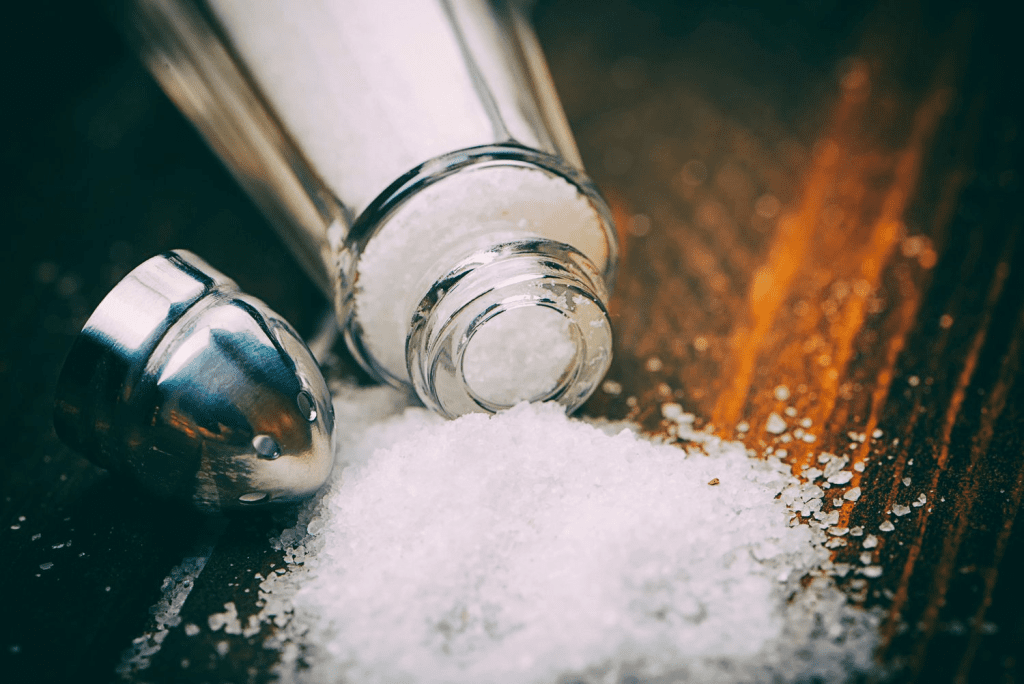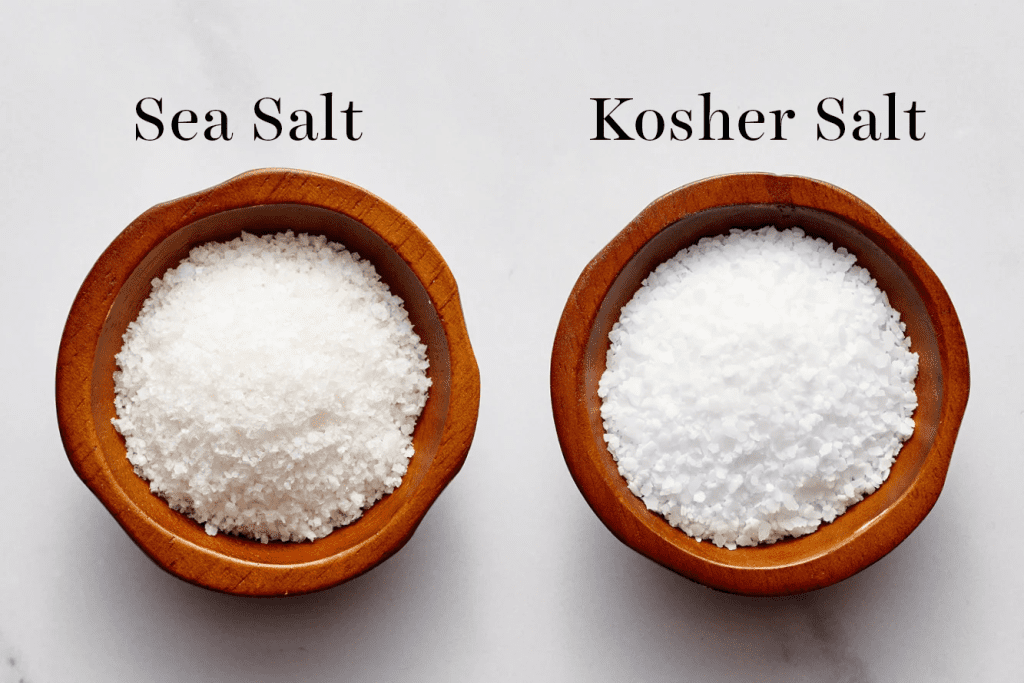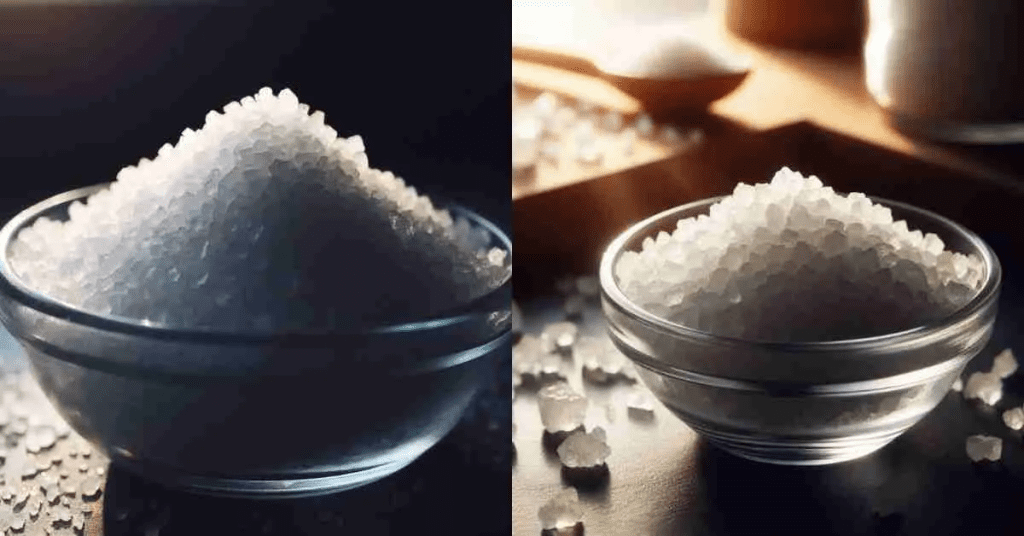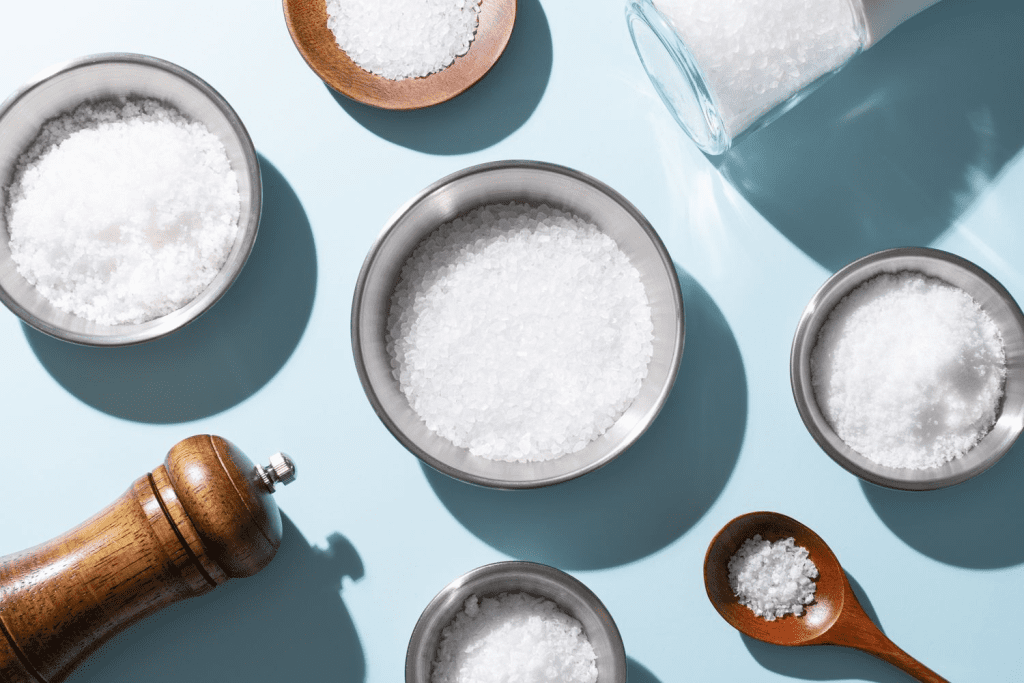Salt is a staple in every kitchen, from seasoned chefs to home cooks. But even though salt might seem simple, it’s actually quite varied. Table salt and kosher salt, for instance, have their own unique properties that can significantly affect the outcome of a dish. While some people use them interchangeably, others argue that each has a specific role. So, is there an actual difference between table salt and kosher salt in recipes? Let’s dive in and see how these two salts stack up.
The Basics: What Is Table Salt?

Table salt is the salt most people are familiar with—those fine, white crystals in a salt shaker at every restaurant. Table salt is:
- Refined and Processed: Table salt is heavily processed to create uniform, fine crystals that dissolve quickly.
- Fortified with Iodine: Since the early 20th century, table salt has often been iodized to help prevent iodine deficiency.
- Contains Anti-Caking Agents: Additives are included to prevent the salt from clumping in humid environments.
This fine, quick-dissolving salt is a go-to for precise recipes like baking, where even distribution and accuracy are crucial.
Getting to Know Kosher Salt: How It Differs
Kosher salt has its own unique characteristics that make it stand out from table salt:
- Larger, Coarser Crystals: Kosher salt crystals are larger and flakier, giving cooks more control when seasoning by hand.
- No Additives or Iodine: Unlike table salt, kosher salt doesn’t contain iodine or anti-caking agents, which can impact the taste.
- Named for Koshering: Kosher salt gets its name from its traditional use in koshering meat, where its texture is ideal for drawing out moisture.
Kosher salt’s texture makes it a favorite for chefs who appreciate the tactile control it provides, as well as its clean, pure flavor.
Texture and Taste: Key Differences Between Table Salt and Kosher Salt
The most noticeable difference between table salt and kosher salt is their texture. This difference impacts not only the taste but also how each salt measures out in recipes.
- Table Salt’s Fine Crystals: Table salt’s small, uniform crystals mean that it’s more concentrated by volume. A teaspoon of table salt contains more salt by weight than a teaspoon of kosher salt.
- Kosher Salt’s Flaky Crystals: Kosher salt is lighter by volume, meaning you may need more of it to achieve the same level of seasoning.
In terms of taste, kosher salt is generally milder and cleaner due to the lack of additives, whereas table salt might have a slightly metallic taste due to its iodine content. This is why many chefs prefer kosher salt for its neutral flavor and less intense saltiness.
The Role of Salt in Cooking and Baking
Salt does more than just make food taste “salty.” It enhances flavors, balances sweetness, and even changes the texture of certain dishes:
- In Cooking: Salt helps to bring out natural flavors in savory dishes and is crucial in seasoning meats and vegetables.
- In Baking: Salt has specific roles, like strengthening gluten in bread and balancing the sweetness in cakes or cookies.
Because baking is a more precise science, table salt is often recommended for its consistency. In cooking, where measurements can be a bit more flexible, kosher salt offers more control and an even spread of flavor.
Why Table Salt and Kosher Salt Aren’t Always Interchangeable

A big mistake people make is thinking they can swap table salt and kosher salt in equal amounts without noticing a difference. But due to the variance in crystal size, this can lead to over-salting or under-salting:
- Measuring Differences: Because table salt is denser, a teaspoon of it will be saltier than a teaspoon of kosher salt. This is why recipes that call for kosher salt should not be replaced with table salt without adjusting the amount.
- Dissolution Speed: Table salt dissolves faster, which can be beneficial in recipes where you need the salt to integrate quickly. Kosher salt takes a bit longer, which can be ideal for seasoning meats and other dishes that benefit from a slower release of saltiness.
When following a recipe, always consider which salt it specifies, and if you must substitute, be sure to adjust accordingly. A good rule of thumb is to use about half as much table salt as kosher salt.
When to Use Table Salt in the Kitchen
Table salt has its strengths and is indispensable in certain situations:
- Baking: Since baking requires precision, the uniformity of table salt makes it ideal for baked goods. Its fine crystals disperse evenly, so you get a consistent flavor throughout.
- Quick-Dissolving Needs: Table salt is excellent for recipes where you need the salt to dissolve quickly, such as in soups, sauces, and marinades.
- Regions Prone to Iodine Deficiency: Table salt’s iodine content can be beneficial, especially in areas where people may not get enough iodine naturally.
While table salt may lack the purity of flavor that some prefer, it’s an excellent choice for applications where speed and precision matter.
When Kosher Salt Takes the Lead in Recipes

Kosher salt is often the favorite of professional chefs and home cooks alike for several reasons:
- Seasoning Meats and Vegetables: The larger grains make kosher salt easy to sprinkle and pinch, allowing for better control when seasoning meats and roasted veggies.
- Brining: Kosher salt dissolves at a slower pace, making it a great choice for brining meats, where a gradual absorption is key.
- Flavor Purity: Because kosher salt doesn’t contain iodine, it’s ideal for recipes where a clean salt flavor is desired.
If you’re making a roast, grilling meat, or simply seasoning veggies, kosher salt is often the better choice for the best flavor and texture.
Common Misconceptions About Salt Interchangeability
It’s a common belief that all salts are created equal and can be swapped without issue. However, this can lead to unintended results. Here’s why:
- Texture and Saltiness Vary: Each salt has a unique crystal size, which affects its flavor intensity and how much is needed.
- Additives Can Alter Flavor: Table salt’s additives can give it a different taste, which may not blend as seamlessly in certain dishes as kosher salt does.
By understanding these differences, you can avoid accidentally over-seasoning or under-seasoning a dish when making a substitution.
Tips for Choosing the Right Salt for Every Recipe

Making an informed choice between table salt and kosher salt doesn’t have to be difficult. Here are a few quick tips:
- Stick to Table Salt for Baking: Its precise measurements and even distribution are crucial in baked goods.
- Opt for Kosher Salt When Seasoning by Hand: It’s easier to control, making it ideal for meats, salads, and veggies.
- Taste and Adjust: When substituting, start with a smaller amount and taste as you go, adjusting to your preference.
A little experimentation can go a long way in helping you find the perfect salt balance for your dishes.
Conclusion: Elevating Your Cooking with the Right Salt
Understanding the differences between table salt and kosher salt can make a noticeable impact on your cooking and baking. Each has its strengths, and knowing when to use which salt will enhance your culinary results. Table salt offers precision in baked goods and fast-dissolving qualities, while kosher salt gives you better control over seasoning and a pure, clean flavor.
Next time you’re in the kitchen, consider the role of salt in your recipe, and don’t be afraid to try both types to find what suits your taste. Whether you reach for table salt or kosher salt, a pinch of the right salt can make all the difference in bringing out the best in your dishes.


